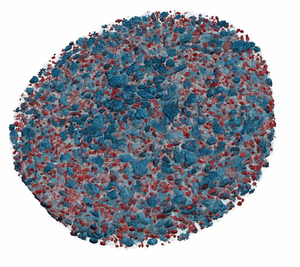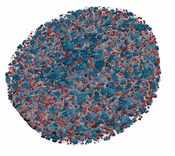Information
- Publication Type: Master Thesis
- Workgroup(s)/Project(s):
- Date: January 2009
- TU Wien Library:
- Diploma Examination: January 2009
- First Supervisor:
Abstract
Non-destructive testing (NDT) is a key aspect of present day engineering and development
which examines the internal structures of industrial components such as
machine parts, pipes and ropes without destroying them. Industrial pieces require
critical inspection before they are assembled into a finished product in order to
ensure safety, stability, and usefulness of the finished object. Therefore, the goal of
this thesis is to explore industrial Computed Tomography (CT) volumes, with the
goal to facilitate the whole quantification approach of the components at hand by
bridging the gap between visualization on the one hand, and interactive quantification
of features or defects on the other one.
The standard approach for defect detection in industrial CT builds on region growing,
which requires manually tuning parameters such as target ranges for density and size,
variance, as well as sometimes also the specification of seed points. To circumvent
repeating the whole process if the region growing results are not satisfactory, the
method presented in this thesis allows interactive exploration of the parameter
space. The exploration process is completely separated from region growing in
an unattended pre-processing stage where the seeds are set automatically. The
pre-computation results in a feature volume that tracks a feature size curve for
each voxel over time, which is identified with the main region growing parameter
such as variance. Additionally, a novel 3D transfer function domain over (density,
feature size, time) is presented which allows for interactive exploration of feature
classes. Features and feature size curves can also be explored individually, which
helps with transfer function specification and allows coloring individual features and
disabling features resulting from CT artifacts. Based on the classification obtained
through exploration, the classified features can be quantified immediately.
The visualization and quantification results of this thesis are demonstrated on
different real-world industrial CT data sets.
Additional Files and Images
Additional images and videos
Additional files
Weblinks
No further information available.
BibTeX
@mastersthesis{fritz-2009-ieq,
title = "Interactive Exploration and Quantification of Industrial CT
Data",
author = "Laura Fritz",
year = "2009",
abstract = "Non-destructive testing (NDT) is a key aspect of present day
engineering and development which examines the internal
structures of industrial components such as machine parts,
pipes and ropes without destroying them. Industrial pieces
require critical inspection before they are assembled into a
finished product in order to ensure safety, stability, and
usefulness of the finished object. Therefore, the goal of
this thesis is to explore industrial Computed Tomography
(CT) volumes, with the goal to facilitate the whole
quantification approach of the components at hand by
bridging the gap between visualization on the one hand, and
interactive quantification of features or defects on the
other one. The standard approach for defect detection in
industrial CT builds on region growing, which requires
manually tuning parameters such as target ranges for density
and size, variance, as well as sometimes also the
specification of seed points. To circumvent repeating the
whole process if the region growing results are not
satisfactory, the method presented in this thesis allows
interactive exploration of the parameter space. The
exploration process is completely separated from region
growing in an unattended pre-processing stage where the
seeds are set automatically. The pre-computation results in
a feature volume that tracks a feature size curve for each
voxel over time, which is identified with the main region
growing parameter such as variance. Additionally, a novel 3D
transfer function domain over (density, feature size, time)
is presented which allows for interactive exploration of
feature classes. Features and feature size curves can also
be explored individually, which helps with transfer function
specification and allows coloring individual features and
disabling features resulting from CT artifacts. Based on the
classification obtained through exploration, the classified
features can be quantified immediately. The visualization
and quantification results of this thesis are demonstrated
on different real-world industrial CT data sets.",
month = jan,
address = "Favoritenstrasse 9-11/E193-02, A-1040 Vienna, Austria",
school = "Institute of Computer Graphics and Algorithms, Vienna
University of Technology ",
URL = "https://www.cg.tuwien.ac.at/research/publications/2009/fritz-2009-ieq/",
}

 image
image paper
paper

